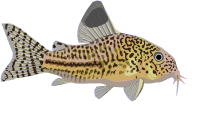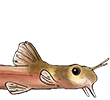Lima, SMQ, AV Vasconcellos, WM Berbel-Filho, C Lazoski, CAM Russo, I Sazima & AM Solé-cava, 2016. Effects of Pleistocene climatic and geomorphological changes on the population structure of the restricted-range catfish Trichogenes longipinnis (Siluriformes: Trichomycteridae). Systematics and Biodiversity doi: 10.1080/14772000.2015.1104398.
[Abstract
Trichogenes longipinnis Britski & Ortega is a narrowly distributed endemic and phenotypically variable catfish from the coastal basins of the Serra do Mar range in southeast Brazil. We examined patterns of mtDNA variation of this species in coastal basins of the Serra do Mar to determine the influences of past climatic and geomorphological processes in connection with the currently isolated basins. Allozyme data were also used to test the hypothesis that the different spotting patterns in the different areas could be the result of cryptic speciation. Regardless of body pigmentation, T. longipinnis specimens from across the basins were found to belong to a single species, but the populations were structured in accordance with the current hydrological watersheds, in four management units across the three distinct basins of its geographic distribution. Thus, the current genetic distribution may be best explained by both marine regressions and orogeny. Based on the low levels of genetic variation and high population structure observed, we suggest that T. longipinnis should be classified as “vulnerable” in the Brazilian red list of threatened fauna. Furthermore, we propose that the headwaters of the Parati-Mirim River basin should be incorporated as an extension of the Bocaina National Park to protect its genetically differentiated lineages.
Population structure in Trichogenes
- Silurus
- Posts: 12461
- Joined: 31 Dec 2002, 11:35
- I've donated: $12.00!
- My articles: 55
- My images: 896
- My catfish: 1
- My cats species list: 90 (i:1, k:0)
- Spotted: 428
- Location 1: Singapore
- Location 2: Moderator Emeritus





